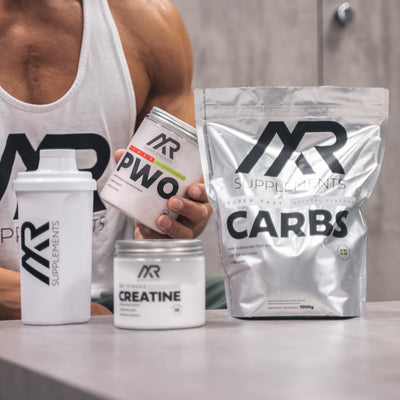Every day, I meet clients with a plethora of beliefs about diet and exercise. Many of these beliefs are myths that have been spread over time. It's time to separate fact from fiction. Let's dive into the most common myths I encounter and see what the science actually says about them.
Myth 1: "You have to be in a calorie surplus to build muscle."
The truth: It's not necessary to be in a constant calorie surplus to build muscle. The most important things are getting enough protein, having a well-planned training routine, and getting enough sleep and rest. These factors play a bigger role in muscle recovery and growth than just a calorie surplus.
Myth 2: "Training more than 4-5 times a week leads to overtraining."
The truth: The frequency of training does not automatically lead to overtraining. It is the quality of training, diet, and recovery that is crucial. Proper nutrition and adequate sleep are key to avoiding overtraining. However, it is important to listen to your body and give it the rest it needs.
Myth 3: "If I injure a shoulder, I have to rest from all training."
The truth: An injury doesn't have to mean a complete stop to training. Other parts of the body can still be trained, and many injuries can benefit from specific rehabilitation or light exercise to promote healing.
Myth 4: "Supplements are unnecessary, you just pee it all out."
The truth: Supplements can be an important part of an athlete's nutritional regimen, especially to meet specific nutritional needs that may not be met through diet. Research shows that many supplements, such as protein powder, creatine, and certain vitamins, can have positive effects on muscle growth, recovery, and performance.
Myth 5: "Eating late at night leads to weight gain."
The truth: It's a common misconception that eating late at night automatically leads to weight gain. In reality, weight gain is a result of total calorie intake over time, not the time of day you eat. As long as your total daily energy expenditure is in balance with your intake, it doesn't matter when you eat.
Myth 6: "Low-intensity exercise is best for burning fat."
The truth: It has long been believed that low-intensity exercise alone is most effective for burning fat. However, research shows that a combination of high- and low-intensity exercise is actually more effective for both burning fat and improving overall fitness.
Myth 7: "You can target fat loss to specific body parts." Truth: There is no exercise that can target fat loss in specific body parts. Fat loss occurs all over the body, and where we lose fat first is often determined genetically and hormonally.
Myth 8: "Protein immediately after a workout is crucial for muscle building." The truth: There has been a strong belief that rapid protein intake after a workout is critical for muscle building. However, what really counts is your total daily protein intake. As long as you're getting enough protein throughout the day, you don't need to worry about a specific time frame post-workout. However, if you spread your protein intake out over the course of the day, it's easier to get it all in.
Myth 9: "Carbohydrates are bad and should be avoided for weight loss."
The truth: There is a misconception that carbohydrates themselves lead to weight gain and should therefore be avoided. The truth is that carbohydrates are an important source of energy, especially for those who exercise regularly. The key is to choose the right types of carbohydrates and balance them with other nutrients.
Myth 10: "It is possible to turn fat into muscle."
The truth: Many people believe they can "convert" fat into muscle through exercise. However, this is a misconception. Fat and muscle are different tissue types; you can lose fat and build muscle at the same time, but they don't convert into each other.




